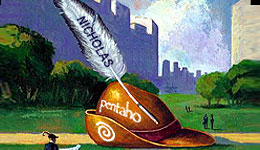Open source is democratic, open, real.
While I have a good sense for which Tech Tips would be useful, I’d also like to ask the community for what tips they’d like to see written up:
- Mondrian: Star Schema to OLAP cubes
A very basic Star Schema with a Fact and Two Dimensions show how this is built into a Mondrian cube and how to built a “Pivot view” Pentaho report. - Mondrian: Advanced MDX
Sets, top, running totals, etc - Kettle: Portable ETL
Showing how to use paramater injection to make your Kettle solution (Jobs and Transforms) executable inside of Pentaho. - Kettle: Custom rollups using Excel
Showing how to build a dimension, reporting table, etc using a very easy to use interface for business users. - Reporting: List of Values
Show how to use the most unfortunately named Secure Filter component to do list of values (even though you are not REQUIRED to do any security). Not very eloquent but the suggestion has been to call it a “Prompt For” component (see below). Think “parameter page” driven by “select distinct name from my_reporting_table.” - Report Designer: How to build reports with Charts
The latest release included the charting expressions so now one can build reports with lovely looking charts. - Report Designer: How to pass “Pentaho” parameters to reports
This allows the building of drill thru parameters, titles, and other “context” from the server - Pentaho Spreadsheet Services: Your data looking sexy in Excel
A quick how to of how to get an instant excel analytic interface into ANY database. Example with Oracle XE.
Comments are ON… vote, have your say. I WANT to do all of these, and will, eventually. What do YOU want to see?

